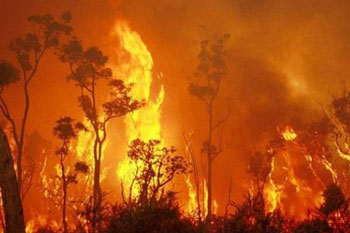In a statement on the Australian bushfires published on 10 January 2020, the President of the Australian Academy of Science, Professor John Shine, stated that ‘the scale of these bushfires is unprecedented anywhere in the world’.
Australia has extraordinarily high levels of biodiversity and is one of 17 countries with ‘megadiversity’ of plant, insect and animal life. Of the more than 600,000 predicted species in Australia, only 30% have so far been discovered, documented and named.
In terms of hectares burnt the Australian fires are the largest to affect any of the megadiverse countries—that is, larger than the 2019 Amazon and 2019 Californian fires.
Fires of greater geographical extent have occurred in Australia in the past (e.g. fires in central Australia in 1974-75 covered over 100 million hectares). However, these fires burned largely the grasslands of inland Australia. Unlike forest fires these grassland fires are less intense and the ecosystems can more rapidly recover. Also, there is far lower economic impacts or loss of life because these fires occur in vast remote landscapes.
Australian Academy of Science Fellow Professor Chris Dickman has estimated that Australia has lost at least a billion birds, mammals and reptiles this bushfire season. This figure does not include insects, bats, fish and frogs.
Australia is at risk of losing a significant proportion of its biodiversity as a result of these bushfires and because much of Australia’s biodiversity occurs only here in Australia, it’s a global loss.

On this biodiversity measure alone, the scale of these bushfires is unprecedented anywhere in the world. With many species residing in already burnt or threatened areas, the impact of the fires on species extinction will be ongoing after the bushfire season.
The combination of a number of other factors also make this fire unprecedented in Australia’s history. These include:
© 2025 Australian Academy of Science